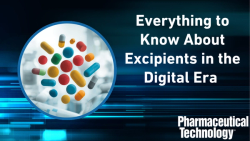
OR WAIT null SECS
- About Us
- Advertise
- Contact Us
- Editorial Info
- Editorial Advisory Board
- Do Not Sell My Personal Information
- Privacy Policy
- Terms and Conditions
© 2025 MJH Life Sciences™ , Pharmaceutical Technology - Pharma News and Development Insights. All rights reserved.
Regulators Tackle Nitrosamine Contamination in Prescription and OTC Ulcer and Heartburn Medications
EMA plans to issue new guidance, as US and European regulators respond to reports of nitrosamine contamination in H2 blockers, including Zantac, that contain rantidine.
On September 13, 2019, both the European Medicines Agency and the US Food and Drug Administration (EMA and FDA) responded to reports that trace levels of nitrosodimethylamine (NDMA) had been found in the histamine-2 (H2) blocker rantidine, which is used to block excess acid secretion in the stomach, to treat conditions ranging from acid reflux and ulcers to heartburn and acid indigestion. Contamination may affect both prescription and over-the-counter forms of the drug.
The European Commission has asked EMA to begin a review of rantidine medicines throughout the European Union, to determine whether patients using the medication are at risk. The Committee for Medicinal Products for Human Use (CHMP) will issue formal guidance to help manufacturers avoid presence of nitrosamines in products and to respond quickly should contamination be found. “We will continue to work with our partners to address the presence of nitrosamines and reassure patients about the quality of their medicines,” said EMA Executive Director Guido Rasi, quoted in a press release that was issued on September 16, 2019. Rasi noted that “It is of paramount importance that we learn from our experience with sartans and take a proactive approach for other classes of medicines.”
Rantidine represents the third group of drugs to be affected by trace nitrosamine contamination. However, in this case, not only prescription but also over-the-counter medications (OTC) may be at risk.
In 2018, traces of nitrosodimethylamine (NDMA) and other nitrosamines, classified as probable human carcinogens, were found in a number of prescription blood-pressure medications. The cases involved angiotensin II receptor blockers (ARBs), notably valsartan but other sartans as well, and the APIs used to manufacture them.) The news triggered voluntary product recalls in more than 23 countries, global regulatory reviews, and investigations into the root causes of contamination.
In April 2019, low levels of NDMA were found in some batches of the diabetes treatment, pioglitazone, manufactured by Hetero Labs in India, prompting EMA to issue manufacturer alerts to ensure the use of proper materials and adequate testing.
Both FDA and EMA are working to determine whether the low levels of NDMA found in rantidine pose a risk to patients. As with ARBs, FDA advises patients and healthcare givers to continue with existing rantidine treatments, according to a communique by Janet Woodcock, director of the FDA’s Center for Drug Evaluation and Research, issued on September 13, 2019. “Although NDMA may cause harm in large amounts, the levels that FDA is finding in ranitidine from preliminary tests barely exceed amounts you might expect to find in common foods,” said Woodcock in the announcement. However, for OTC treatment, both FDA and EMA suggest that alternatives be considered. FDA has asked that consumers and healthcare providers report any adverse reactions to rantidine to FDA’s MedWatch program, by downloading a report form at www.fda.gov/medwatch/report.htmand faxing it to 1-800-FDA-0178
Beware use of reclaimed solvents and catalysts
After the ARB contamination was found, FDA issued general advice to name-brand and generic pharmaceutical companies planning to apply for approval for an ARB drug product, and to companies that hold drug master files for ARB APIs. FDA’s advice emphasized the importance of complying with ICH M7, “Assessment and Control of DNA-Reactive (Mutagenic) Impurities in Pharmaceuticals to Limit Potential Carcinogenic Risk.” FDA had finalized guidance on complying with ICH M7 in March 2018. The agency also underscored the fact that nitrosamines can form during API and finished drug manufacturing under specific conditions and in the presence of certain raw materials or starting materials.
FDA pinpointed the use of recovered solvents and catalysts in the manufacturing process as requiring special precautions and testing. Recovered solvents and catalysts may pose a risk, the regulators wrote in the general advice document, because amines may be present and quenched during the recycling process to destroy any residual azides, but these materials may not be completely removed during recovery.
In addition, commingled solvents can pose a manufacturing risk, the regulators warned. Finally, raw material contamination can be very difficult to detect, and basic compendial identity and purity tests will not detect trace levels of the genotocix impurities.
In 2018, EMA released a number of recommended analytical procedures, including the LGL, Swissmedic and CVUA/Karlsruhe methods involving the use of mass spectrometry (MS), liquid and gas chromatography (LC and GC). FDA approved use of a GC-MS headspace method to test for the contaminants. Both regulatory agencies have pledged to work together to collaborate with other regulators to prevent risks to patients and the global supply chain. However, they emphasize the responsibility that manufacturers have to test and ensure the quality of starting materials and final products.



